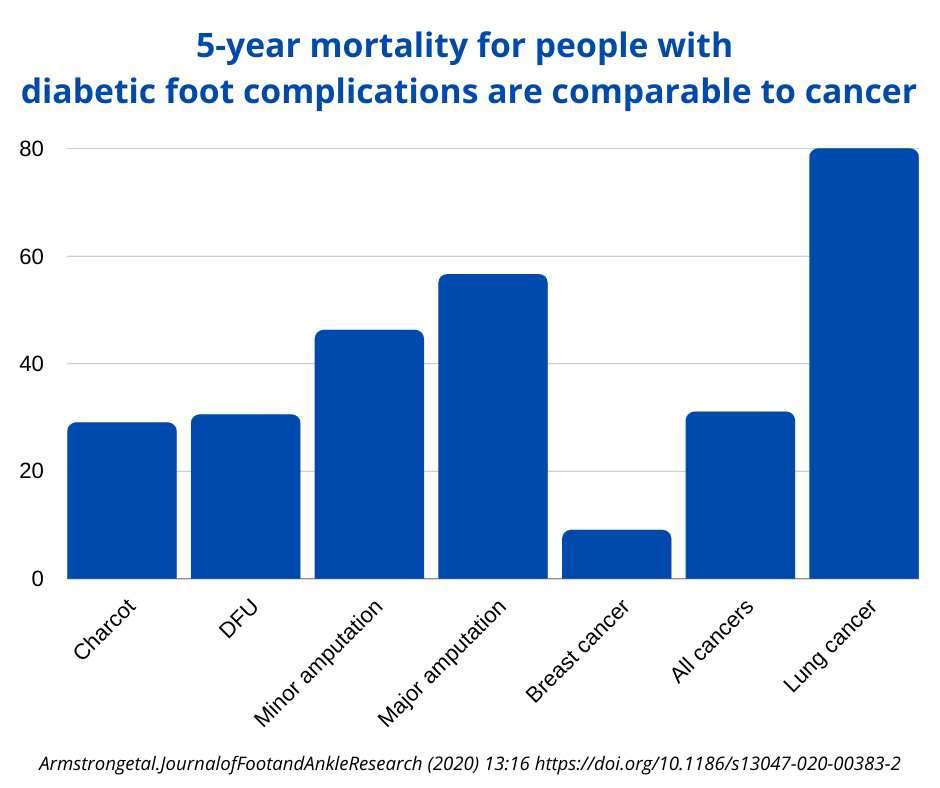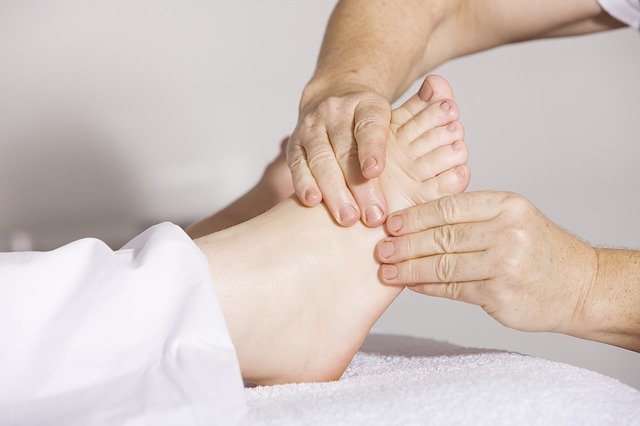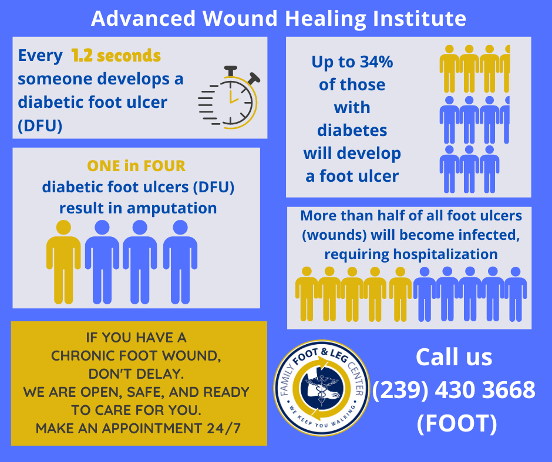Diabetic Wounds: Deadlier than Cancer
Diabetes remains the 7th leading cause of death in the United States in 2010, with 69,071 death certificates listing it as the underlying cause of death, and a total of 234,051 death certificates listing diabetes as an underlying or contributing cause of death1. One of the common contributing causes of death in diabetes is a diabetic foot ulcer (DFU), and if left untreated could lead to lower extremity amputation (LEA). Five-year mortality rates after new-onset diabetic ulceration have been reported between 43% and 55% and up to 74% for patients with lower-extremity amputation2. These rates are higher than those for several types of cancer including prostate, breast, colon, and Hodgkin’s disease.
Did you know that approximately 15% of all diabetic patients will get a foot ulcer in their life3. Foot ulcers occur due to lack of sensation to the foot. Peripheral neuropathy, another condition commonly found in diabetics, damages the nerves, impairing sensation to the foot. This allows injuries to go unnoticed, leading to infections and ulceration. Diabetic foot ulcers are extremely difficult to treat, and it would take months for the wound to heal and incidence of reoccurrence is high. In the U.S., approximately 67% of all lower extremity amputations occur in diabetics, and approximately 85% are preceded by a foot ulcer4.
What to do?The key in stopping diabetic foot ulcers and possible amputations is to practice proper foot care and to control diabetes. Below are some commonly overlooked practices that can help maintain good foot health.
Foot care regimen:- Wash feet regularly. Use a mild antibacterial soap and towel dry.
- Keep foot dry. Use antiperspirant powder when wearing shoes to keep your feet dry. Excess moisture can soften the skin, making it vulnerable to skin breaks and infections.
- Moisturize. A foot that is too dry is susceptible to skin cracks, moisturize with your favorite lotion.
- Cut nails carefully.
Daily Foot inspections:- Look for cracks or scratches and treat immediately with an antibiotic ointment.
- Check for sensation on your foot. If there is decreased sensation than usual, immediately visit your doctor.
- From time to time, inspect the insides of your shoes if there is a pebble or anything protruding that could injure your foot.
Control Diabetes:- Take medications regularly.
- Go on a diet. Control food consumption to prevent increase in blood sugar levels.
- Do not miss your doctor’s appointments/check-ups.
Did you know that diabetics are eligible for a pair of diabetic shoes once a year through Medicare?
Medicare provides coverage for depth-inlay shoes, custom-molded shoes, and shoe inserts for people with diabetes who qualify under Medicare Part B. Designed to prevent lower-limb ulcers and amputations in people who have diabetes, this Medicare benefit can prevent suffering and save money.
If you have diabetes, you should see your podiatrist a minimum of once every 6 months for a thorough examination.
Any foot or leg wound that does not heal or takes too long to heal should be seen by a wound specialist because it might be infected and might be due to an underlying disease.
For more information, you may contact Advanced Wound Healing Institute at (239) 430-3668 (FOOT). Advanced Wound Healing Institute is part of Family Foot and Leg Center, P.A. with 9 convenient locations throughout Collier, Lee, Charlotte, and Sarasota Counties to get you back on your feet.
1 http://www.diabetes.org/diabetes-basics/statistics/?loc=db-slabnav#sthash.k3SPUfEL.dpuf
2 “Mortality Rates and Diabetic Foot Ulcers” in Journal of the American Podiatric Medical Association, Vol 98, No 6, November/December 2008
3 National Diabetes Data Group: Diabetes in America, Vol. 2. Bethesda, MD, National Institutes of Health 1995 (NIH publ. no. 95-1468)
4 Pecoraro RE, Reiber GE, Burgess EM. Pathways to diabetic limb amputation: basis for prevention. Diabetes Care 1990;13:513–21.

At the Advanced Wound Healing Institute, we use advanced wound healing technologies to help keep patients out of the hospital and onto healing.
- Faster recovery time
- Better results
- Improved long-term outlook
- Optimal quality of life
We use in-office advanced wound healing products from Organogenesis
If you have a foot, ankle, leg, knee wound, do not delay.
See us at any of our 9 convenient locations throughout Collier, Lee, Charlotte, and Sarasota Counties.
Your wound healing experts.
Self Service Portal open
24 hrs/7 days

Diabetic foot ulcers lead to amputation and mortality
Diabetic foot ulcers lead to amputation and mortality, and thus, it is very important to prevent them. At the Advanced Wound Healing Institute, we offer advanced wound care for your feet and legs.
Our doctors are well trained from residency in conservative and advanced wound care options from simple debridement to advance grafting and flap techniques.
Our doctors are well trained from residency in conservative and advanced wound care options from simple debridement to advance grafting and flap techniques.
American College of Foot and Ankle Surgeons
Advanced wound care is a patient-centered and a multidisciplinary approach between podiatrist, vascular surgeon, and primary care doctor.
At the Advanced Wound Healing Institute, we specialize in the treatment of wounds that are difficult to heal. We offer the most current and advanced treatments in wound care.
At the Advanced Wound Healing Institute, we specialize in the treatment of wounds that are difficult to heal. We offer the most current and advanced treatments in wound care.
What you need to know about P.A.D. Peripherial Arterial Disease Now
Frank discussion about Peripheral arterial disease (P.A.D.) in diabetics, how to save toes, legs and lives.
If you or your loved ones suffer from diabetes, must see us now. What you need to know now.
If you or your loved ones suffer from diabetes, must see us now. What you need to know now.
What you need to know about P.A.D. Peripherial Arterial Disease Now




